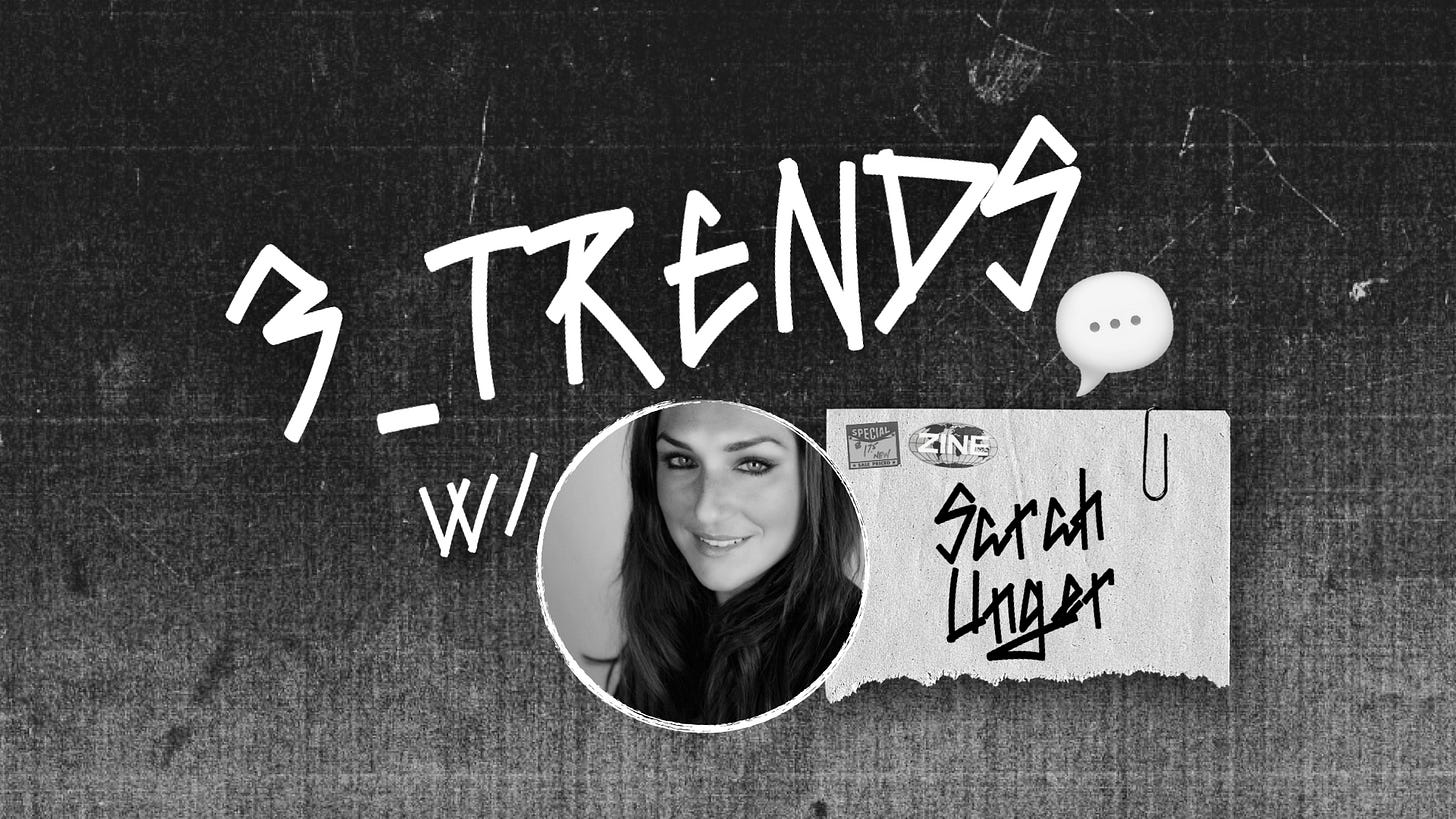3_TRENDS_Vol.15: Sarah Unger: Memento Mori, Natural Awe + Four Day Week
Vol.15
3_TRENDS is an interview series with the world's leading cultural researchers and thinkers, sharing their favorite overlooked trends.
Sarah Unger (SU) is the co-founder of CULTIQUE, a cultural advisory for businesses such as Apple, YouTube and HBO. Sarah has led sessions at SXSW & VidCon and is a frequent commentator for The Atlantic & Fortune. In …


